White people
- "Whites" redirects here. For the album, see White People. For other uses, see White (disambiguation).
White people (also Caucasian) is a term which usually refers to human beings characterized, at least in part, by the light pigmentation of their skin. Rather than a straightforward description of skin color, the term white also functions as a color term for race.
One common definition of a "white person" is a person of primarily European ancestry.[1] However, the definition of a "white person" differs according to geographical and historical context, and various social constructions of whiteness have had implications in terms of national identity, consanguinity, public policy, religion, population statistics, racial segregation, affirmative action, eugenics, racial marginalization and racial quotas. The concept has been applied with varying degrees of formality and internal consistency in disciplines including: sociology, politics, genetics, biology, medicine, biomedicine, language, culture, and law.
Contents |
History of the term
The notion of "white people" or a "white race" as a large group of populations contrasting with non-white or "colored" originates in the 17th century. Pragmatic description of populations as "white" in reference to their skin color predates this notion and is found in Greco-Roman ethnography and other ancient sources.
Antiquity and Middle Ages
In the literature of the Ancient Near East and Classical Antiquity, descriptions of the physical aspect of various nations in terms of color is commonplace. The Sumerians referred to themselves as ùĝ saĝ gíg-ga, meaning "the black-headed people".[3] Dr. Vicki Leone contrasts this in her book Uppity Women of Ancient Times, noting that the Sumerians paintings and mosaics depict a people possessing dark blue eyes.[4] The Ancient Egyptian (New Kingdom) funerary text known as the Book of Gates distinguishes "four races of men". These are the Egyptians, the Levantine peoples or "Asiatics", the "Nubians" and the "fair-skinned Libyans".[5]
Xenophon describes the Ethiopians as black, and the Persian troops as white compared to the sun-tanned skin of Greek troops.[6] Herodotus similarly used Melanchroes "dark-skinned" for the Egyptians and he compared them to the Aithiopsi "burned-faced" for the Ethiopians. Herodotus also describes the Scythian Budini as having deep blue eyes and bright red hair.[7]
These color adjectives are typically found in contrast to the "standard" set by the own group, not as a self-description. Classicist James Dee found that, "the Greeks do not describe themselves as "white people"—or as anything else because they had no regular word in their color vocabulary for themselves—and we can see that the concept of a distinct 'white race' was not present in the ancient world."[8]
Assignment of positive and negative connotations of white and black date to the classical period in a number of Indo-European languages, but these differences were not applied to skin color per se. Religious conversion was described figuratively as a change in skin color.[8] Similarly, the Rigveda uses krsna tvac "black skin" as a metaphor for irreligiosity.[9]
The pseudo-Aristotelian Physiognomica (2nd century BC) in keeping with the Aristotelian doctrine of the golden mean postulates that the ideal skin tone was to be found somewhere between very dark and very light:
- "Those who are too black are cowards, like for instance, the Egyptians and Ethiopians. But those who are excessively white are also cowards as we can see from the example of women and Europeans, the complexion of courage is between the two."[10]
Similar views were held by a number of medieval Arabic writers during the time of the medieval Arab Empire. Some Arabs at the time viewed their "swarthy" skin as the ideal skin tone, in comparison to the darker Sub-Saharan Africans and the fairer "ruddy people" (which included Persians, Turks, Caucasians and Europeans).[11]
Early Modern period (17th to 18th century)
The term "white race" or "white people" entered the major European languages in the later 17th century, originating with the racialization of slavery at the time, in the context of the Atlantic slave trade. The term white came into wide use in the British colonies in America from the 1680s.[8][12]
In 1758, Carolus Linnaeus proposed what he considered to be natural taxonomic categories of the human species. He distinguished between Homo sapiens and Homo sapiens europaeus, and he later added four geographical subdivisions of humans: white Europeans, red Americans, yellow Asians and black Africans. Although Linnaeus intended them as objective classifications, he used both taxonomical and cultural data in his subdivision descriptions.[13]
In 1775, Johann Friedrich Blumenbach described the white race as "the white color holds the first place, such as it is that most Europeans. The redness of cheeks in this variety is almost peculiar to it: at all events it is but seldom seen in the rest... Color white, Cheeks rosy".[14] He categorized humans into five races, which largely corresponded with Linnaeus' classifications, except for the addition of Oceanians (whom he called Malay).[13] He characterized the racial classification scheme of Metzger as making "two principal varieties as extremes:(1) the white man native of Europe, of the northern parts of Asia, America and Africa.."[15], and the racial classification scheme of John Hunter as having, "seven varieties:... (6) brownish as the southern Europeans, Turks, Abyssinians, Samoiedes and Lapps; (7) white, as the remaining Europeans, the Mingrelians and Kabardinski"[15]. Blumenbach is known for arguing that physical characteristics like skin color, cranial profile, etc., were correlated with group character and aptitude. Craniometry and phrenology would attempt to make physical appearance correspond with racial categories. The fairness and relatively high brows of Caucasians were held to be apt physical expressions of a loftier mentality and a more generous spirit. The epicanthic folds around the eyes of Mongolians and their slightly sallow outer epidermal layer bespoke their supposedly crafty, literal-minded nature.
Later in life, Blumenbach encountered in Switzerland "eine zum Verlieben schöne Négresse" ("a Negress so beautiful to fall in love with"). Further anatomical study led him to the conclusion that 'individual Africans differ as much, or even more, from other individual Africans as Europeans differ from Europeans'. Furthermore he concluded that Africans were not inferior to the rest of mankind 'concerning healthy faculties of understanding, excellent natural talents and mental capacities'.[16] These later ideas were far less influential than his earlier assertions with regard to the perceived relative qualities of the different races, which opened the way to secular and scientific racism.[17]
In a 1775 work, Von den verschiedenen Rassen der Menschen ("Of [About] The Different Races of Humans"), German philosopher Immanuel Kant used the term weiß (white) to refer to "the white one [race] of northern Europe" (p. 267).[15]
According to Gregory Jay, a professor of English at the University of Wisconsin–Milwaukee,
Before the age of exploration, group differences were largely based on language, religion, and geography. ... the European had always reacted a bit hysterically to the differences of skin color and facial structure between themselves and the populations encountered in Africa, Asia, and the Americas (see, for example, Shakespeare's dramatization of racial conflict in Othello and The Tempest). Beginning in the 1500s, Europeans began to develop what became known as "scientific racism," the attempt to construct a biological rather than cultural definition of race ... Whiteness, then, emerged as what we now call a "pan-ethnic" category, as a way of merging a variety of European ethnic populations into a single "race" ...
—Gregory Jay, "Who Invented White People?"[18]
19th to 20th century
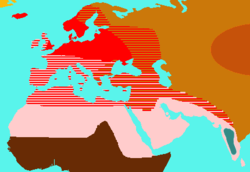
During the period of the mid 19th to mid 20th century,[20] it was common practice in anthropology to classify the world's populations in one of three great races, which, depending on the authority consulted, were further divided into various sub-races. The three great races were the Europid (Caucasian, white), Mongoloid (Asian) and Negroid (black) race.

There has never been any scholarly consensus on the delineation between the Europid race, including the populations of Europe, and the Mongoloid one, including the populations of East Asia. Thus, Carleton S. Coon (1939) included the populations native to all of Central and Northern Asia under the Caucasian label, while Thomas Henry Huxley (1870) classified the same populations as Mongoloid, and Lothrop Stoddard (1920) excluded the populations of the Middle East and North Africa as well as those of Central Asia, classifying them as "brown", and counted as "white" only the European peoples.
Some authorities, following Huxley (1870), distinguished the Xanthochroi or "light whites" of Northern Europe with the Melanochroi or "dark whites" of the Mediterranean.
The study into race and ethnicity in the late 19th century developed into what would later be termed scientific racism.
21st century
Alastair Bonnett has stated that, a strong "current of scientific research supports the theory that Europeans were but one expression of a wider racial group (termed sometimes Caucasian), a group that included peoples from Asia and North Africa".[1] Bonnett, does, however, note that this is not a commonplace definition: in Europe and North America the inclusion of non-Europeans is a "technicality little favoured outside certain immigration bureaucracies and traditional anthropology."[1]
Raj Bhopal and Liam Donaldson opine that white people are a heterogeneous group, and the term white should therefore be abandoned as a classification for the purposes of epidemiology and health research, and identifications based on geographic origin and migration history be used instead.[21]
Physical appearance
Some people identify themselves as white with a few common human physical characteristics. The most notable traits describing people who identify as white is light skin, thin hair, and narrow noses. Some people with lighter phenotypes will classify themselves and be classified by others in the "white" category".[22]
Light skin

White people are archetypically distinguished by light skin. Scientists discovered a skin-whitening mutation that largely explains the first appearance of white skin in humans between 20,000–50,000 years ago.[23] In Jablonski and Chaplin's (2000) study, The evolution of human skin coloration, Europeans have lighter skin (as measured by population average skin reflectance read by spectrophotometer at A685) than any other group that was measured. Southern Europeans (measures taken from Spaniards) show a skin pigmentation in parts of the body not exposed to the sun similar to that of Northern Europeans and, in some cases, even lighter.[24] While all mean values of skin reflectance of non-European populations are lower than Europeans for the groups represented in this study, there is significant overlap between populations.[25] This observation has been noted by the Supreme Court of the United States, which stated in a 1923 lawsuit over whiteness that the "swarthy brunette[s] ... are darker than some of the lighter hued persons of the brown or yellow races".[26]
The epidermis of light skinned people is not white nor free of pigment. The underlying layers of collagen and adipose tissue are white in people of all races. In lightly pigmented people, the epidermis is an almost transparent layer of film. Consequently the epidermis allows the underlying white tissues to become visible.[27] Blood vessels interlaced between the adipose tissue produce the pale pink color associated with light skin. Pigments known as carotenes found in the fat produce a more yellow effect. In darker skinned people the epidermis is filled with melanosomes that obscure the underlying layers.[28][29][30]
The skin of albinos is similar to European and East Asian people's skin in that it is depigmented relative to other populations. However, in white and East Asian people the enzymes that produce melanin are still active and produce relatively small amounts of melanin to provide some coloration to the skin. With albinos, the enzyme that produces melanin is defective, thus they produce virtually no melanin, which produces the palest skin of all humans.[31] Since melanin protects the skin from UV radiation, albinos have no natural protection and their skin is vulnerable to sunlight that can be tolerated by other light-skinned peoples. Furthermore in the presence of more intense levels of UV radiation from the sun, the skin cells of white and East Asian people are able to produce additional amounts of melanin to tan the skin to a darker complexion, providing extra protection, while albinos lack the ability to tan.[32][33] Albinism is very rare. For example, one person in 17,000 in the United States has some type of albinism.[34]
Origins of light skin
Chimpanzees are the closest living relatives to humans, and since they, like most primates, and the great apes in particular, have light skin covered by hair (except for the face, hands, and feet), it is likely that our shared common ancestor would also have lacked pigmentation and been covered by hair.[35] As human brain size increased the increase in its energy requirements would have required finer thermoregulation to avoid overheating.[24] This may be one reason why humans developed sweat glands, an evolution we share with only a small number of creatures (including swine, many species of which are also hairless). The additional loss of body hair would have increased the effectiveness of evaporation of sweat, and produced better cooling.[24] Though naked skin is advantageous for thermoregulation, it exposes the epidermis to destructive levels of UV radiation that can cause sunburn, skin cancer and birth defects resulting from the destruction of the essential vitamin B folate.[24] Consequently strong natural selection in Africa favored increased levels of melanin in the skin, once homonids moved out onto the open savanah, and the hairless Hominina ancestors of modern humans developed the required adaptation of dark skin.[24]
Light skin color would have been a severe disadvantage to those living under the bright African sun.[35] However, when humans left Africa for less sun-intense regions of the world, the selective pressure against lighter skin would have relaxed. This probably explains the greater variety of skin color found outside sub-Saharan Africa.[36] Lighter skin colors may have been advantageous at higher latitudes since they allow greater penetration of the sun's UV radiation, a requirement for vitamin D synthesis. This may have led to selection for lightly pigmented skin.[35] Scientists have identified at least 100 genes associated with pigment processing. Though African populations are relatively dark, according to a recent study they possess a greater diversity in skin complexion than all other populations. It is therefore likely that many of the alleles associated with light pigmentation were already present in an ancestral population in Africa prior to their dispersal. When humans migrated out of Africa, the lighter skin causing alleles may have accumulated in one population, either by genetic drift, natural selection, sexual selection or a combination of these effects. Since their effects are additive it is possible light skin could arise over several generations without any new mutations taking place.[37][38]
According to Luigi Luca Cavalli-Sforza, light skin probably arose in North Africa or both in the north and east.[39]
A 2006 study provides evidence that the light skin pigmentation observed in Europeans and East Asians arose independently. They concluded that light pigmentation in Europeans is at least partially due to the effects of positive directional and/or sexual selection.[40]
Molecular biology of light skin
Skin color is a quantitative trait that varies continuously on a gradient from dark to light, as it is a polygenic trait, under the influence of several genes. Many of these genes have yet to be identified. However, two genes that are known to contribute to skin color are MC1R and SLC24A5.[35] The mutation resulting in the light skin version of the SLC24A5 gene has been estimated to have originated in Europe between 6,000 and 12,000 years ago, indicating that at least one of the genes responsible for pale skin colour in Europeans arose relatively recently.[41]
Mixed ancestry people of African-European descent who possess one or two copies of the European allele of the SLC24A5 gene have skin color that is significantly lighter than mixed ancestry people who possess only the African allele. It is estimated, based on this observation, that the SLC24A5 locus "explains between 25–38% of the European-African difference in skin melanin index".[38][42][43][44]
Census and social definitions in different regions
| Regions with significant populations | ||||||||||||||||||||||||||||||||||||
|---|---|---|---|---|---|---|---|---|---|---|---|---|---|---|---|---|---|---|---|---|---|---|---|---|---|---|---|---|---|---|---|---|---|---|---|---|
| Official census statistics where availiable. | ||||||||||||||||||||||||||||||||||||
|
Definitions of white have changed over the years, including the official definitions used in many countries, such as the United States and Brazil.[57] Some defied official regulations through the phenomenon of "passing", many of them becoming white people, either temporarily or permanently. Through the mid- to late 20th century, numerous countries had formal legal standards or procedures defining racial categories (see cleanliness of blood, apartheid in South Africa, hypodescent). However, as critiques of racism and scientific arguments against the existence of race arose, a trend towards self-identification of racial status arose. Below are some census definitions of white, which may differ from the social definition of white within the same country. The social definition has also been added where possible.
Argentina
Argentina, along with other areas of new settlement like Canada, Australia, New Zealand or the United States, is considered a country of immigrants where the vast majority originated from Europe.[58] According to different estimates, white Argentines make up anywhere from 86.4%[59] to 97% of Argentina's population, or around 39 million people.[60]
Most immigrants came between the mid-19th century and World War II. Nearly half were from Italy,[61] and almost one third from Spain. Poland, France, the Ottoman Empire (chiefly Christian Lebanese, Syrians, Greeks and Armenians), Russia, Austria-Hungary, Germany, Yugoslavia, and Portugal made up the other eight top sources of immigrants. Switzerland, Belgium, United Kingdom, Denmark, Netherlands, Sweden, and the United States were the next largest. European Jews were among the Eastern European arrivals.
Argentine censuses are conducted on the basis of self-identification. According to the last census, 95% of Argentines identify as white.[62]
Criticism of the national census state that data has historically been collected using the category of national origin rather than race in Argentina, leading to undercounting Afro-Argentines and mestizos.[63] Africa Viva (Living Africa) is a black rights group in Buenos Aires with the support of the Organization of American States, financial aid from the World Bank and Argentina's census bureau is working to add an "Afro-descendants" category to the 2010 census. The 1887 national census was the final year where blacks were included as a separate category before it was eliminated by the government.[64]
Australia
From 1788, when the first British colony in Australia was founded, until the early 19th century, most immigrants to Australia were British and Irish convicts. These were augmented by small numbers of free settlers from Britain, Ireland and other European countries. However, until the mid-19th century, there were few restrictions on immigration, although members of ethnic minorities tended to be assimilated into the Anglo-Celtic populations.
People of many nationalities, including many non-white people, emigrated to Australia during the goldrushes of the 1850s. However, the vast majority was still white and the goldrushes inspired the first racist activism and policy, directed mainly at Chinese people.
From the late 19th century, the Colonial/State and later federal governments of Australia restricted all permanent immigration to the country by non-Europeans. These policies became known as the "White Australia policy", which was consolidated and enabled by the Immigration Restriction Act 1901,[65] but was never universally applied. Immigration inspectors were empowered to ask immigrants to take dictation from any European language as a test for admittance, a test used in practice to exclude people from Asia, Africa, and some European and South American countries, depending on the political climate.
Although they were not the prime targets of the policy, it was not until after World War II that large numbers of southern European and eastern European immigrants were admitted for the first time.[66] Following this, the White Australia Policy was relaxed in stages: non-European nationals who could demonstrate European descent were admitted (e.g. descendants of European colonizers and settlers from Latin American or Africa), as were autochthonous inhabitants of various nations from the Middle East, most significantly from Lebanon. In 1973, all immigration restrictions based on race and/or geographic origin were officially terminated.
Brazil
Recent censuses in Brazil are conducted on the basis of self-identification. In the 2000 census, 53% of Brazilians (approximately 93 million people in 2000; around 100 million as of 2006) were white and 39% pardo or multiracial Brazilians. White is applied as a term to people of European descent (including European Jews), and Middle Easterners of all faiths. The census shows a trend of fewer Brazilians of African descent (blacks and pardos) identifying as white people as their social status increases.[67][68] Demographers estimate that of the Brazilians who classify themselves as White, as many as 15 percent have enough of a trace of African ancestry to be considered Black by methods used to classify groups in the United States.[69]
Canada
In the results of Statistics Canada's 2001 Canadian Census, white is one category in the population groups data variable, derived from data collected in question 19 (the results of this question are also used to derive the visible minority groups variable).[70]
In the 1995 Employment Equity Act, '"members of visible minorities" means persons, other than Aboriginal peoples, who are non-Caucasian in race or non-white in colour'. In the 2001 Census, persons who selected Chinese, South Asian, African, Filipino, Latin American, Southeast Asian, Arab, West Asian, Middle Eastern, Japanese or Korean were included in the visible minority population.[71] A separate census question on "cultural or ethnic origin" (question 17) does not refer to skin color.[72]
Chile
In 2009, Chile had an estimated population of 16,970,000, of which approximately 8.8 million or 52.7% are of European descent, with mestizos estimated at 44%.[73] Other studies found a white majority measured at 64% to 90% of the Chilean population.[74][75][76] However, another study that analyzed the genotype of the Chilean population showed that 30% are white, while the mestizo population with predominantly white (castizo) ancestry is estimated at 65%.[77] Chile's various waves of immigrants consisted Spanish, Italians, Irish, French, Greeks, Germans, English, Scots, Croats, and Palestinian arrivals.
The largest ethnic group in Chile arrived from Spain and the Basque regions in the south of France. Estimates of the number of Basque descendants in Chile range from 10% (1,600,000) to as high as 27% (4,500,000).[78][79] [80] [81] [82][83][84][85]
In 1848 an important and substantial German immigration took place, laying the foundation for the German-Chilean community. Sponsored by the Chilean government for the colonization of the southern region, the Germans (including German-speaking Swiss, Silesians, Alsatians and Austrians), strongly influenced the cultural and racial composition of the southern provinces of Chile. The German Embassy in Chile estimated 500,000 to 600,000 Chileans are of German origin.[86]
It is estimated that nearly 5% of the Chilean population is of Asian descent, chiefly from the Middle East (i.e. Palestinians, Syrians, and Lebanese, totalling around 800,000.[87][88] Note that Israelis, both Jewish and non-Jewish citizens of the nation of Israel may be included. Chile is home to a large population of immigrants, mostly Christian, from the Levant.[89] Roughly 500,000 Palestinian descendants are believed to reside in Chile.[90][91][92][93][94]
Another historically significant immigrant group is Croatian. The number of their descendants today is estimated to be 380,000 persons, the equivalent of 2.4% of the population.[95][96] Other authors claim, on the other hand, that close to 4.6% of the Chilean population must have some Croatian ancestry.[97] Over 700,000 Chileans may have British (English, Scottish or Welsh) origin. 4.5% of Chile's population.[98] Chileans of Greek descent are estimated 90,000 to 120,000.[99] Most of them live either in the Santiago area or in the Antofagasta area, and Chile is one of the 5 countries with the most descendants of Greeks in the world.[100] The descendants of the Swiss reach 90,000[101] and it is estimated that about 5% of the Chilean population has some French ancestry.[102] 600,000 to 800,000 are of Italian descent. Other groups of Europeans have followed, but are found in smaller numbers. Together they transformed the country culturally, economically and politically.
Costa Rica
In 2009, Costa Rica had an estimated population of 4,509,290. White people make up 85%, and Mestizos 10% of the population. 3% of the remainder are Black people, 1% are Amerindians, and 1% are Chinese. White Costa Ricans are mostly of Spanish ancestry, but there are also significant numbers of Costa Ricans descended from Italian, German, English, Dutch, French, Irish, Portuguese, Lebanese and Polish families, as well a sizable Jewish community.[103]
Cuba
Contrary to most other Caribbean nations, Cuba became a Caribbean island predominantly populated by European immigrants (followed in such regard by Puerto Rico). In 1958 it was estimated that approximately 74% of Cubans were of European ancestry, mainly of Spanish origin, 10% of African ancestry, 15% of both African and European ancestry (mulattos), and a small 1% of the population was Asian, predominantly Chinese. However, after the Cuban revolution, due to a combination of factors, mainly mass exodus to Miami, United States, a drastic decrease in immigration, and interracial reproduction, Cuba's demography has changed. As a result, those of complete European ancestry and those of pure African ancestry have decreased, the mulatto population has increased, and the Asian population has, for all intents and purposes, disappeared.
The 2002 census figures supplied by the Cuban regime claims that 65% of Cubans were white.[104] However, the Institute for Cuban and Cuban-American Studies at the University of Miami says the present Cuban population is 38% white and 62% black/mulatto.[104] The Minority Rights Group International says that "An objective assessment of the situation of Afro-Cubans remains problematic due to scant records and a paucity of systematic studies both pre- and post-revolution. Estimates of the percentage of people of African descent in the Cuban population vary enormously, ranging from 33.9 per cent to 62 per cent".[105][106]
According to the 2002 census, Cuba's population was 11,177,743.
Jamaica
Jamaicans of European descent form less than 1% of Jamaica's population. They are mainly descendants of the British and Germans, with small groups of Scottish, Irish, Lebonese and French, There are around 3,000 white people living in Jamaica today.
Norway
According to the Norwegian Social Science Data Service, white is a possible answer to ethnic/people group category question. After Norwegians, Sami, Kvens and other Nordics, it is mentioned as white/European. Other categories are Asian, Black/African/Caribbean and "other".[107]
Puerto Rico
| Official Census [108][109][110] | ||
|---|---|---|
| Year | White | Non-White |
| 1830 | 50.1 | 49.9 |
| 1899 | 61.8 | 38.2 |
| 2000 | 80.5 | 19.5 |
| 2007 | 76.2 | 23.8 |
| Racial composition (percentages) by the official Spanish and U.S census. |
||
Contrary to most other Caribbean nations, Puerto Rico gradually became a Caribbean island predominantly populated by European immigrants. Puerto Ricans of European, mostly Spanish descent, are said to comprise the majority. (See: Spanish immigration to Puerto Rico). In the year 1899, one year after the U.S invaded and took control of the island, 61.8% of people self-identified as White. For the first time in fifty years, the 2000 United States Census which is conducted on the basis of self-identification. One hundred years later, the total has risen to 80.5% (3,064,862), one percent more than reported in 1950.[111]
Hundreds from Corsica, France, Ireland, Scotland, Germany, Italy, Lebanon, and Portugal, along with large numbers of immigrants from Spain. This was the result of granted land from Spain during the Real Cedula de Gracias de 1815 (Royal Decree of Graces of 1815), which allowed European Catholics to settle in the island with a certain amount of free land.
Between 1960 and 1990 the census questionnaire in Puerto Rico did not ask about race or color. Racial categories therefore disappeared from the dominant discourse on the Puerto Rican nation. However, the 2000 census included a racial self-identification question in Puerto Rico and, for the first time ever, allowed respondents to choose more than one racial category to indicate mixed ancestry. (Only 4.2% chose two or more races.) With few variations, the census of Puerto Rico used the same questionnaire as in the U.S. mainland. This decision was a response to intense lobbying by former governor Pedro Rossello's administration to include Puerto Rico in federal census statistics, along with the fifty states. According to census reports, most islanders responded to the new federally mandated categories on race and ethnicity by insisting on their "whiteness"; few declared themselves to be Black or some other race.[112]
South Africa

White South Africans is a term which refers to people from South Africa who are of Afrikaner, British or other continental European descent. Statistics South Africa estimates that there are about 4.3 million white people in South Africa, while CIA estimates their numbers are closer to 5.2 million.[113]—However, it is clear that all numbers are down from an all-time high of 5.6 million in 1995.[114]
Prior to the decolonisation movements of the post-World War II era, white people were represented in every part of Africa.[115] Decolonisation during the 1960s and 1970s often resulted in the mass emigration of European-descended settlers out of Africa—especially from Algeria (1.6 million pieds-noirs in North Africa),[116] Angola (half-million whites),[117] Kenya, Congo,[118] Mozambique and Rhodesia. Nevertheless, White Africans remain an important minority in many African states. The African country with the largest White African population is South Africa.[119]
Great Britain and Ireland
Historical white identities
Historically in Great Britain and Ireland whiteness may have been associated with social status . Aristocrats may have had less exposure to the sun , and therefore a pale complexion may have been associated with status and wealth . This may be the origin of "blue blood" as a description of royalty, the skin being so lightly pigmented that the blueness of the veins could be clearly seen.[120] The change in the meaning of white that occurred in the colonies (see above) to distinguish Europeans from non-Europeans did not apply to 'home' countries (England, Ireland, Scotland and Wales). Whiteness therefore retained a meaning associated with social status. During the 19th century, when the British Empire was at its peak, many of the bourgeoisie and aristocracy developed extremely chauvinistic attitudes to those of lower social rank. Edward Lhuyd discovered that Welsh, Gaelic, Cornish and Breton are all part of the same language family, which he called "Celtic", and were distinct from the Germanic English; this can be seen in context with 19th century romantic nationalism. On the other hand the discovery of Anglo-Saxon remains also led to a belief that the English were descended from a distinct Germanic lineage that was fundamentally (and racially) different from that of the Celts. Early British anthropologists such as John Beddoe and Robert Knox emphasised this distinction, and it was common to find texts that claimed that Welsh, Irish and Scottish people are the descendants of the indigenous more "primitive" inhabitants of the islands, while the English, are the descendants of a more advanced and recent "Germanic" migration. Beddoe especially postulated that the Welsh and Irish people are closer to the Cro-Magnon, whom he also considered Africanoid, and it was common to find references to the swarthyness of the skin of peoples from the west of the islands, by comparison to the more pale skinned and blond English residing in the east. For example Thomas Huxley's "On the Geographical Distribution of the Chief Modifications of Mankind" (1870) described Irish, Scots and Welsh peoples as a mixture of "melanochroi" (melano – dark coloured), and "xanthochroi", while the English were "xanthochroi" (xanthro – yellow). Just as race reified whiteness in the colonies, so capitalism without social welfare reified whiteness with regards to social class in 19th century Britain and Ireland; this social distinction of whiteness became, over time, associated with racial difference. For example George Sims in How the poor live (1883) wrote of "...a dark continent that is within easy reach of the General Post Office... the wild races who inhabit it will, I trust, gain public sympathy as easily as [other] savage tribes"[121] and Count Gobineau in The Inequality of Human Races wrote the following:
Every social order is founded upon three social classes, each of which represents a racial variety: the nobility, a more or less accurate reflection of the conquering race; the bourgeoisie composed of mixed stock coming close to the chief race; and the common people who live in servitude or at least in a very depressed position.[122]
Modern and official use
In the UK, the Office for National Statistics uses the term white as an ethnic category. The terms White British, White Irish, White Scottish and White Other are used. White British includes English, Scottish, Welsh and Northern Irish peoples. The term "White Scottish" is an alternative to "White British" for use of people who define themselves as white from Scotland. The category White Irish refers to white people from the Republic of Ireland and Northern Ireland. White Other includes all white people not from the British Isles.[123][124] Socially, in the UK white usually refers only to people of native British, Irish and European origin.[125] In 2001 92.2% of the British population identified themselves as white, and 2006 estimates for England only, state the English population as 88.7% white. As of 2007, 22% of primary school children in England were from ethnic minority families.[126]
United States
The current U.S. Census definition includes white "people having origins in any of the original peoples of Europe, the Middle East or North Africa.[127] The U.S. Department of Justice Federal Bureau of Investigation describes white people as "having origins in any of the original peoples of Europe, the Middle East, or North Africa through racial categories used in the UCR Program adopted from the Statistical Policy Handbook (1978) and published by the Office of Federal Statistical Policy and Standards, U.S. Department of Commerce.[128]
The cultural boundaries separating white Americans from other racial or ethnic categories are contested and always changing. According to John Tehranian, among those not considered white at some points in American history have been: the Irish, Germans, Jews, Italians, Spaniards, Hispanics, Slavs, and Greeks.[129] Studies have found that while current parameters officially encompassed Arabs as part of the White American racial category, many Arab Americans from places other than the Levant feel they are not white and are not perceived as white by American society."[130]
Professor David R. Roediger of the University of Illinois, suggests that the construction of the white race in the United States was an effort to mentally distance slave owners from slaves.[131] By the 18th century, white had become well established as a racial term. The process of officially being defined as white by law often came about in court disputes over pursuit of citizenship. The Immigration Act of 1790 offered naturalization only to "any alien, being a free white person". In at least 52 cases, people denied the status of white by immigration officials sued in court for status as white people. By 1923, courts had vindicated a "common-knowledge" standard, concluding that "scientific evidence" was incoherent. Legal scholar John Tehranian argues that in reality this was a "performance-based" standard, relating to religious practices, education, intermarriage and a community's role in the United States.[132]
In 1923, the Supreme Court decided in United States v. Bhagat Singh Thind that people of India were not "free white men" entitled to citizenship, despite anthropological evidence in "the extreme northwestern districts of India"[133] there is present the "Caucasian or Aryan race"[133] with an "intermixture of blood"[133] from the "dark skinned Dravidian".
A report from the Pew Research Center in 2008 projects that by 2050, White Americans will make up 47% of the population, down from 67% projected in 2005.[134] White Americans made up nearly 90% of the population in 1950.[135]
One drop rule
The one drop rule—that a person with any amount of known of African ancestry (however small or invisible) is not white—is a classification that was used in parts of the United States.[136] It is a colloquial term for a set of laws passed by 18 states of the USA between 1910 and 1931, many of which were passed as a consequence of Plessy v. Ferguson, a Supreme Court decision that upheld the concept of racial segregation by accepting a separate but equal argument. The set of laws was finally declared unconstitutional in 1967, when the Supreme Court ruled on anti-miscegenation laws while hearing Loving v. Virginia, which also found that Virginia's Racial Integrity Act of 1924 was unconstitutional. The one drop rule attempted to create a bifurcated system of either black or white regardless of a person's physical appearance, but sometimes failed as people with African ancestry sometimes passed as "white" as noted above. This contrasts with the more flexible social structures present in Latin America, where there were no clear-cut divisions between various ethnicities.
As a result of centuries of having children with white people, the majority of African Americans have white admixture, and many white people also have African ancestry. Robert P. Stuckert, member of the Department of Sociology and Anthropology at Ohio State University said that the majority of the descendants of African slaves are white.[137] Writer and editor Debra Dickerson questions the legitimacy of the one drop rule, stating that "easily one-third of black people have white DNA".[138] She argues that in ignoring their white ancestry, African Americans are denying their fully articulated multi-racial identities. The peculiarity of the one drop rule may be illustrated by the case of singer Mariah Carey,[139] who was publicly called "another white girl trying to sing black", but in an interview with Larry King, responded that—despite her physical appearance and the fact that she was raised primarily by her white mother—due to the one drop rule she did not "feel white."[140][141][142]
Uruguay
Uruguayans and Argentines share closely related demographic ties. Different estimates state that Uruguay's population of 3.4 million is composed of 88% to 93% white Uruguayans.[143][144] Uruguay's population is heavily populated by people of European origin, mainly Spaniards, followed closely by Italians,[145] including numbers of French, Germans, Irish, British, Swiss, Eastern Europeans, Southern Europeans, Dutch, Belgians, Austrians, Scandinavians, Lebanese, and Armenians which migrated to Uruguay in the late 19th and 20th centuries. According to the 2006 National Survey of Homes by the Uruguayan National Institute of Statistics: 94.6% self-identified as having a white background, 9.1% chose Afro/Black ancestry, and 4.5% chose a native American ancestry (people surveyed were allowed to choose more than one option).[146]
European-descended peoples
Historical populations
- Antiquity
- South Asia (Caucasoids who migrated from Europe and the Middle East 3,000–8,000 years ago)[147][148]
- Asia Minor (Greeks, Celtic Galatians)[149]
- Tarim Basin in present-day China (possibly Tocharians)[150][151]
- Egypt (Greeks in Egypt)[152]
- Hindukush and Northern India (Indo-Greeks)[153]
- North Africa (Roman colonists, Germanic Vandals)[154]
- Middle Ages
- Asia Minor (Slavs)[155]
- Greenland (Greenland Vikings)[156]
- Kingdom of Jerusalem (Franks) - 25-35% of the population[157][158]
Contemporary populations
Nations and regions outside of Europe with significant populations of European ancestry:
- Africa (see Whites in Africa)
 South Africa (Whites in South Africa) - 9.6% of the population[119]
South Africa (Whites in South Africa) - 9.6% of the population[119]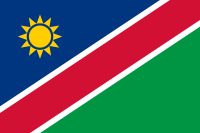 Namibia - 6% of the population, of which most are Afrikaans-speaking, in addition to a German-speaking minority.[159]
Namibia - 6% of the population, of which most are Afrikaans-speaking, in addition to a German-speaking minority.[159] Réunion estimated to be approx. 25% of the population[160]
Réunion estimated to be approx. 25% of the population[160] Zimbabwe (Whites in Zimbabwe)
Zimbabwe (Whites in Zimbabwe) Botswana[161]
Botswana[161] Kenya (Whites in Kenya) - approx. 0.2% of the population.
Kenya (Whites in Kenya) - approx. 0.2% of the population. Algeria (Pied-noir)[162]
Algeria (Pied-noir)[162] Mauritius (Franco-Mauritian)
Mauritius (Franco-Mauritian) Côte d'Ivoire (French people)[163]
Côte d'Ivoire (French people)[163] Senegal[164]
Senegal[164] Canary Islands (Spaniards), known as Canarians.
Canary Islands (Spaniards), known as Canarians. Madeira (Portugal)
Madeira (Portugal) Seychelles (Franco-Seychellois)
Seychelles (Franco-Seychellois) Saint Helena (UK) including
Saint Helena (UK) including  Tristan da Cunha (UK) - predominantly European.
Tristan da Cunha (UK) - predominantly European. Swaziland - 3% of the population[165]
Swaziland - 3% of the population[165]
- Asia
 Siberia (Russians, Russified ethnic Germans and Ukrainians)[166][167]
Siberia (Russians, Russified ethnic Germans and Ukrainians)[166][167]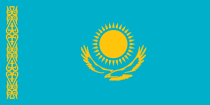 Kazakhstan (Russians in Kazakhstan, Germans of Kazakhstan) - 30% of the population[168]
Kazakhstan (Russians in Kazakhstan, Germans of Kazakhstan) - 30% of the population[168] Uzbekistan (Russians and other Slavs) - 5.5% of the population[169]
Uzbekistan (Russians and other Slavs) - 5.5% of the population[169] Kyrgyzstan (Russians and other Slavs) - 13.5% of the population[170][171]
Kyrgyzstan (Russians and other Slavs) - 13.5% of the population[170][171] Turkmenistan (Russians and other Slavs) - 4% of the population[172]
Turkmenistan (Russians and other Slavs) - 4% of the population[172] Tajikistan (Russians and other Slavs)[173]
Tajikistan (Russians and other Slavs)[173] Azerbaijan (Georgians, Russians and other Slavs)[174]
Azerbaijan (Georgians, Russians and other Slavs)[174] Georgia (Georgians, Abkhazians, Ossetians, Russians in Georgia)[175]
Georgia (Georgians, Abkhazians, Ossetians, Russians in Georgia)[175] Hong Kong[176]
Hong Kong[176] Christmas Island - approx. 20% of the population.
Christmas Island - approx. 20% of the population.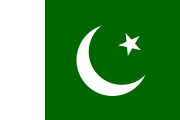 Pakistan - possibly Kalash (related to the Nuristanis)[177]
Pakistan - possibly Kalash (related to the Nuristanis)[177]
- Latin America (see White Latin American)
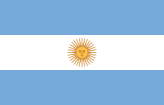 Argentina (White Argentine) - 97% of the population [180]
Argentina (White Argentine) - 97% of the population [180] Bolivia - 15% of the population [181]
Bolivia - 15% of the population [181]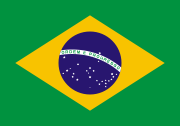 Brazil (White Brazilian) - 53.7% of the population [182]
Brazil (White Brazilian) - 53.7% of the population [182] Chile - 52,7% and 64% of the population[73][183]
Chile - 52,7% and 64% of the population[73][183] Colombia (White Colombian)- 20% of the population [184]
Colombia (White Colombian)- 20% of the population [184] Costa Rica[185]
Costa Rica[185] Cuba - (White Cuban) 65% of the population[186]
Cuba - (White Cuban) 65% of the population[186] Dominican Republic - 16% of the population [187]
Dominican Republic - 16% of the population [187] Ecuador - 7% of the population[188]
Ecuador - 7% of the population[188] El Salvador - 9% of the population[189]
El Salvador - 9% of the population[189]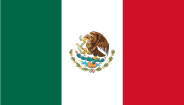 Mexico (White Mexican) - 9% or ~17% of the population.[190][191] and 60-75% more as Mestizos.[192][193]
Mexico (White Mexican) - 9% or ~17% of the population.[190][191] and 60-75% more as Mestizos.[192][193] Nicaragua - 17% of the population[194]
Nicaragua - 17% of the population[194] Panama 10% of the population[195]
Panama 10% of the population[195] Puerto Rico approx. 80% of the population [196]
Puerto Rico approx. 80% of the population [196]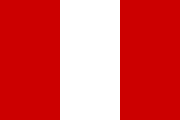 Peru (European Peruvian)- 15 % of the population [197]
Peru (European Peruvian)- 15 % of the population [197]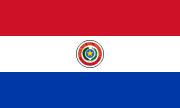 Paraguay approx. 20% of the population [198]
Paraguay approx. 20% of the population [198] Venezuela (White Venezuelan)- 20 % of the population
Venezuela (White Venezuelan)- 20 % of the population Uruguay - 88% of the population [199]
Uruguay - 88% of the population [199]
- Rest of the Americas
 Bahamas - 12% of the population[200]
Bahamas - 12% of the population[200] Barbados (White Barbadian) - 4% of the population[201]
Barbados (White Barbadian) - 4% of the population[201] Bermuda - 34.1% of the population[202]
Bermuda - 34.1% of the population[202] Canada - 80% of the population [203]
Canada - 80% of the population [203] Falkland Islands, exclusively of British descent.
Falkland Islands, exclusively of British descent. French Guiana - 12% of the population[204]
French Guiana - 12% of the population[204] Greenland - 12% of the population[205]
Greenland - 12% of the population[205] Martinique - 5% of the population[206]
Martinique - 5% of the population[206] Saint Barthélemy[207]
Saint Barthélemy[207] Trinidad and Tobago[208] - 0.6 % of the population
Trinidad and Tobago[208] - 0.6 % of the population United States of America (European American) - 75.1% of the population, including Hispanic and Non-Hispanic Whites.
United States of America (European American) - 75.1% of the population, including Hispanic and Non-Hispanic Whites.
- Oceania (see Europeans in Oceania)
 Australia - 89.3% of the population
Australia - 89.3% of the population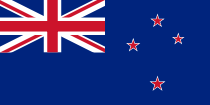 New Zealand (New Zealand European) - 78% of the population
New Zealand (New Zealand European) - 78% of the population New Caledonia (Caldoche) - 34.5% of the population
New Caledonia (Caldoche) - 34.5% of the population French Polynesia - 10% of the population[209]
French Polynesia - 10% of the population[209] Hawaii - 41.26% of the population
Hawaii - 41.26% of the population Guam - 6.9% of the population[210]
Guam - 6.9% of the population[210] Norfolk Island, exclusively of British descent from Australia or New Zealand.
Norfolk Island, exclusively of British descent from Australia or New Zealand.
See also
|
||||||||||||||||||||||||||
References
- ↑ 1.0 1.1 1.2 Bonnett, Alastair (2000) White Identities. Pearson Education. ISBN 0-582-35627-X
- ↑ "The first are RETH, the second are AAMU, the third are NEHESU, and the fourth are THEMEHU. The RETH are Egyptians, the AAMU are dwellers in the deserts to the east and north-east of Egypt, the NEHESU are the Cushites, and the THEMEHU are the fair-skinned Libyans" (chapter VI, translated by E. A. Wallis Budge, 1905).
- ↑ W. Hallo, W. Simpson (1971). The Ancient Near East. New York: Harcourt, Brace, Jovanovich. p. 28.
- ↑ "Uppity Women of Ancient Times, page 11". Vicki Leone. http://www.amazon.com/Uppity-Women-Ancient-Times-Vicki/dp/1573240109.
- ↑ "The first are RETH, the second are AAMU, the third axe NEHESU, and the fourth are THEMEHU. The RETH are Egyptians, the AAMU are dwellers in the deserts to the east and north-east of Egypt, the NEHESU are the Cushites, and the THEMEHU are the fair-skinned Libyans" (chapter VI, translated by E. A. Wallis Budge, 1905).
- ↑ Xenophanes of Colophon: Fragments, Xenophanes, J. H. Lesher, University of Toronto Press, 2001, ISBN 0-8020-8508-3, p. 90.; Agesilaus
- ↑ Herodotus 4.108 trans. Rawlinson.
- ↑ 8.0 8.1 8.2 James H. Dee, "Black Odysseus, White Caesar: When Did 'White People' Become 'White'?" The Classical Journal, Vol. 99, No. 2. (December 2003 – January 2004), pp. 162 ff..
- ↑ Michael Witzel, "Rgvedic History" in: The Indo-Aryans of South Asia (1995): "while it would be easy to assume reference to skin colour, this would go against the spirit of the hymns: for Vedic poets, black always signifies evil, and any other meaning would be secondary in these contexts"
- ↑ Aristotle, Physiognomica, 6.
- ↑ Bernard Lewis (1992). Race and slavery in the Middle East: an historical enquiry. Oxford University Press. pp. 18–9. ISBN 0195053265
- ↑ Baum (2006), p. 48. Winthrop Jordan, White Over Black: American Attitudes Towards the Negro 1974, p. 52, puts the shift from white from earlier Christian, free, and English to around 1680. Theodore Allen (1994). The Invention of the White Race: Racial Oppression and Social Control. Verso. ISBN 0-86091-660-X. http://clogic.eserver.org/1-2/allen.html. "Another seventeenth-century commentator, Morgan Godwyn, found it necessary to explain to the English at home that, in Barbados, 'white' was "the general name for Europeans."
- ↑ 13.0 13.1 Sarah A Tishkoff and Kenneth K Kidd (2004) Implications of biography of human populations for 'race' and medicine Nature Genetics
- ↑ Painter, Nell Irvin. Yale University. "Why White People are Called Caucasian?" 2003. September 27, 2007. [1]
- ↑ 15.0 15.1 15.2 Quoted in Blumenbach, Johann. The Anthropological Treatise of Johann Friedrich Blumenbach. London: Longman Green, 1865.
- ↑ Jack Hitt, “Mighty White of You: Racial Preferences Color America’s Oldest Skulls and Bones,” Harper’s, July 2005, pp. 39–55
- ↑ Fredrickson, George M. Racism: A Short History, p.57, Princeton University Press (2002), ISBN 0-691-00899-X
- ↑ Gregory Jay w [Who Invented White People? http://web.archive.org/web/20070502063801/http://www.uwm.edu/~gjay/Whiteness/Whitenesstalk.html], 1998.
- ↑ Huxley, T. H. "On the Geographical Distribution of the Chief Modifications of Mankind" (1870) Journal of the Ethnological Society of London
- ↑ Baum (2006), p. 120 gives the range 1840 to 1935.
- ↑ Bhopal R, Donaldson L (September 1998). "White, European, Western, Caucasian, or what? Inappropriate labeling in research on race, ethnicity, and health". Am J Public Health 88 (9): 1303–7. doi:10.2105/AJPH.88.9.1303. PMID 9736867. PMC 1509085. http://ajph.aphapublications.org/cgi/reprint/88/9/1303?view=long&pmid=9736867.
- ↑ The concept and measurement of race and their relationship to public health: a review focused on Brazil and the United States by Claudia Travassos and David R. Williams. Cad. Saúde Pública (2004) v.20 n.3. Sexual preference of paleness in women is a cultural universal, and has been reported from medieval Japan, Aztec Mexico and Moorish Spain, even before there was significant contact with Western ideology: Peter Frost "Fair Women, Dark Men: The Forgotten Roots of Color Prejudice," (2005). Preference of lighter-skinned women by black men is reported both in sub-Saharan Africa and in the black diaspora (Lyang 2006
- ↑ Scientists Find A DNA Change That Accounts For White Skin, The Washington Post, December 16, 2005
- ↑ 24.0 24.1 24.2 24.3 24.4 NG, Chaplin G. 2000 The evolution of skin coloration, p. 19.
- ↑ American Anthropological Association, "The Human Spectrum", Race: Are we so different? website.
- ↑ John Tehranian, "Performing Whiteness: Naturalization Litigation and the Construction of Racial Identity in America," The Yale Law Journal, Vol. 109, No. 4. (Jan., 2000), p. 827.
- ↑ Introduction to Skin Histology
- ↑ Skin Color Adaptation
- ↑ Light and the 4 skin color components
- ↑ The 3 skin layers: epidermis, dermis, subcutaneous fat
- ↑ [2] Skin Care: How to Save Your Skin page 13 ISBN 0-7668-3818-8
- ↑ The skin we're in
- ↑ Barsh GS (October 2003). "What controls variation in human skin color?". PLoS Biol. 1 (1): E27. doi:10.1371/journal.pbio.0000027. PMID 14551921.
- ↑ Albinism
- ↑ 35.0 35.1 35.2 35.3 Why humans and their fur parted ways
- ↑ Rana et al. (2000). "High Polymorphism at the Human Melanocortin 1 Receptor Locus" (PDF). Pigment Cell Research 13: 135. doi:10.1034/j.1600-0749.2000.130303.x. http://www.genetics.org/cgi/reprint/151/4/1547.
- ↑ Human skin color diversity is highest in sub-Saharan African populations
- ↑ 38.0 38.1 Heather L. Norton, Rick A. Kittles, Esteban Parra, Paul McKeigue, Xianyun Mao, Keith Cheng, Victor A. Canfield, Daniel G. Bradley, Brian McEvoy and Mark D. Shriver (December 11, 2006) Genetic Evidence for the Convergent Evolution of Light Skin in Europeans and East Asians Oxford Journals [3]
- ↑ Luigi Luca Cavalli-Sforza, Genes, Peoples and Languages p75, Penguin, 2001, ISBN 0-14-029602-6
- ↑ Heather L. Norton, Rick A. Kittles, Esteban Parra, Paul McKeigue, Xianyun Mao, Keith Cheng, Victor A. Canfield, Daniel G. Bradley, Brian McEvoy and Mark D. Shriver (December 11, 2006) Genetic Evidence for the Convergent Evolution of Light Skin in Europeans and East Asians Oxford Journals [4]
- ↑ Gibbons A (2007). "American Association of Physical Anthropologists meeting. European skin turned pale only recently, gene suggests". Science 316 (5823): 364. doi:10.1126/science.316.5823.364a. PMID 17446367. http://img46.imageshack.us/img46/4784/eurospaleonlyrecentlypu0.jpg.
- ↑ SLC24A5, a Putative Cation Exchanger, Affects Pigmentation in Zebrafish and Humans
- ↑ Lamason RL, Mohideen MA, Mest JR, Wong AC, Norton HL, Aros MC, Jurynec MJ, Mao X, Humphreville VR, Humbert JE, Sinha S, Moore JL, Jagadeeswaran P, Zhao W, Ning G, Makalowska I, McKeigue PM, O'donnell D, Kittles R, Parra EJ, Mangini NJ, Grunwald DJ, Shriver MD, Canfield VA, Cheng KC (2005). "SLC24A5, a putative cation exchanger, affects pigmentation in zebrafish and humans". Science 310 (5755): 1782–6. doi:10.1126/science.1116238. PMID 16357253.
- ↑ Scientists Find A DNA Change That Accounts For White Skin, Washington Post
- ↑ White Americans self-identification: 2008 American Community Survey 1-Year Estimates
- ↑ [5]
- ↑ 2008 Brazilian population.
- ↑ [6]
- ↑ [7]
- ↑ Census 2001 England's poulation.
- ↑ Cuba 2002 Census.
- ↑ Scotland 2001 Census.
- ↑ /www.statssa.gov.za South Africa statistics.
- ↑ Census 2006 of the Republic of Ireland
- ↑ Census 2000: Puerto Rico.
- ↑ 2001 Census: Wales statistics.
- ↑ Adams, J.Q.; Pearlie Strother-Adams (2001). Dealing with Diversity. Chicago, IL: Kendall/Hunt Publishing Company. ISBN 0-7872-8145-X.
- ↑ "Argentina's last Jewish cowboys". BBC News. February 12, 2007. http://news.bbc.co.uk/2/hi/programmes/from_our_own_correspondent/6347349.stm. Retrieved January 6, 2010.
- ↑ "Argentine Demographics". http://www.worldstatesmen.org/Argentina.html.
- ↑ "CIA World Factbook – Argentina". https://www.cia.gov/library/publications/the-world-factbook/geos/ar.html.
- ↑ "90.01.06: South American Immigration: Argentina". http://www.yale.edu/ynhti/curriculum/units/1990/1/90.01.06.x.html. Retrieved 2008-12-01.
- ↑ "2001 National Census". http://www.indec.mecon.ar/webcenso/index.asp.
- ↑ Racial Discrimination in Argentina
- ↑ Ackerman, Ruthie (November 27, 2005). "Blacks in Argentina -- officially a few, but maybe a million". The San Francisco Chronicle. http://www.sfgate.com/cgi-bin/article.cgi?f=/c/a/2005/11/27/MNGH0FU3UG1.DTL.
- ↑ Immigration Restriction Act 1901
- ↑ Stephen Castles, "The Australian Model of Immigration and Multiculturalism: Is It Applicable to Europe?," International Migration Review, Vol. 26, No. 2, Special Issue: The New Europe and International Migration. (Summer, 1992), pp. 549–567.
- ↑ Gregory Rodriguez, "Brazil Separates Into Black and White," LA Times, September 3, 2006. Note that the figures belie the title.
- ↑ Brazil Separates Into a World of Black and White | The New America Foundation
- ↑ Whitaker, Charles (1991). "Blacks in Brazil: the myth and the reality". Ebony. http://findarticles.com/p/articles/mi_m1077/is_n4_v46/ai_9329550.
- ↑ "Groups" in Statistics Canada, Sample 20001 Census form. Statistics Canada, 2001 Census Visible Minority and Population Group User Guide
- ↑ Human Resources and Social Development Canada, 2001 Employment Equity Data Report
- ↑ Census 2001: 2B (Long Form)
- ↑ 73.0 73.1 Fernández, Francisco Lizcano (2007). Composición Étnica de las Tres Áreas Culturales del Continente Americano al Comienzo del Siglo XXI. UAEM. ISBN 9789707570528. http://books.google.com/?id=LcabJ98-t1wC&pg=PA93&lpg=PA93&dq=chile+60%25+blancos+Esteva-Fabregat.
- ↑ Argentina, como Chile y Uruguay, su población está formada casi exclusivamente por una población blanca e blanca mestiza procedente del sur de Europa, más del 90% E. García Zarza, 1992, 19.
- ↑ Genetic epidemiology of single gene defects in Chile.
- ↑ The Chilean population is rather homogeneous with 95.4 % of its population having European ancestors.
- ↑ "5.2.6. Estructura racial". La Universidad de Chile. http://mazinger.sisib.uchile.cl/repositorio/lb/ciencias_quimicas_y_farmaceuticas/medinae/cap2/5b6.html. Retrieved 2007-08-26.
- ↑ Diariovasco.
- ↑ entrevista al Presidente de la Cámara vasca.
- ↑ vascos Ainara Madariaga: Autora del estudio "Imaginarios vascos desde Chile La construcción de imaginarios vascos en Chile durante el siglo XX".
- ↑ Basques au Chili.
- ↑ Contacto Interlingüístico e intercultural en el mundo hispano.instituto valenciano de lenguas y culturas. Universitat de València Cita: " Un 20% de la población chilena tiene su origen en el País Vasco".
- ↑ (Spanish) La población chilena con ascendencia vasca bordea entre el 15% y el 20% del total, por lo que es uno de los países con mayor presencia de emigrantes venidos de Euskadi.
- ↑ El 27% de los chilenos son descendientes de emigrantes vascos. DE LOS VASCOS, OÑATI Y LOS ELORZA Waldo Ayarza Elorza.
- ↑ (Spanish) Presencia vasca en Chile.
- ↑ German Embassy in Chile.
- ↑ (Spanish) Arabes de Chile.
- ↑ (Spanish) En Chile viven unas 700.000 personas de origen árabe y de ellas 500.000 son descendientes de emigrantes palestinos que llegaron a comienzos del siglo pasado y que constituyen la comunidad de ese origen más grande fuera del mundo árabe.
- ↑ Arab.
- ↑ Chile: Palestinian refugees arrive to warm welcome.
- ↑ (Spanish) 500,000 descendientes de primera y segunda generación de palestinos en Chile.
- ↑ (Spanish) Santiago de Chile es un modelo de convivencia palestino-judía.
- ↑ Exiling Palestinians to Chile.
- ↑ (Spanish) Chile tiene la comunidad palestina más grande fuera del mundo árabe, unos 500.000 descendientes.
- ↑ (Spanish) Diaspora Croata..
- ↑ Splitski osnovnoškolci rođeni u Čileu.
- ↑ hrvatski.
- ↑ "Historia de Chile, Británicos y Anglosajones en Chile durante el siglo XIX". http://www.biografiadechile.cl/detalle.php?IdContenido=1673&IdCategoria=91&IdArea=488&TituloPagina=Historia%20de%20Chile. Retrieved 2009-04-26.
- ↑ (Spanish) Embajada de Grecia en Chile.
- ↑ (Spanish) Griegos de Chile
- ↑ 90,000 descendants Swiss in Chile.
- ↑ (Spanish) 5% de los chilenos tiene origen frances.
- ↑ "Costa Rica". The World Factbook. CIA. https://www.cia.gov/library/publications/the-world-factbook/geos/cs.html#People.
- ↑ 104.0 104.1 "A barrier for Cuba's blacks - New attitudes on once-taboo race questions emerge with a fledgling black movement". http://www.miamiherald.com/multimedia/news/afrolatin/part4/index.html.
- ↑ "World Directory of Minorities and Indigenous Peoples - Cuba : Afro-Cubans". http://www.unhcr.org/refworld/docid/49749d342c.html.
- ↑ "World Directory of Minorities and Indigenous Peoples - Cuba : Overview". http://www.unhcr.org/refworld/country,,,COUNTRYPROF,CUB,4562d94e2,4954ce3123,0.html.
- ↑ Immigrant population
- ↑ How Puerto Rico became white.
- ↑ Representation of racial identity among puerto ricans and in the u.s. mainland
- ↑ CIA World Factbook Puerto Rico 2007. Retrieved June 8, 2009.
- ↑ Puerto Rico's History on race
- ↑ Representation of racial identity among Island Puerto Ricans
- ↑ South Africa's population, SouthAfrica.info
- ↑ Million whites leave SA - study, fin24.com, September 24, 2006
- ↑ "We Want Our Country" (3 of 10), TIME
- ↑ "For Pieds-Noirs, the Anger Endures". The New York Times. April 6, 1988.
- ↑ "Flight from Angola", The Economist , August 16, 1975
- ↑ "Jungle Shipwreck". Time. July 25, 1960
- ↑ 119.0 119.1 South Africa: People: Ethnic Groups. World Factbook of CIA
- ↑ Bonnet, Alistair (2000) White Identities p. 32
- ↑ Bonnet, Alistair (2000) White Identities p. 31
- ↑ Bonnet, Alistair (2000) White Identities p. 37
- ↑ Identity, Ethnicity and Identity, National Statistics online. Retrieved 3 November 2006.
- ↑ Census 2001 - Ethnicity and religion in England and Wales, Ethnicity and religion. Retrieved 3 November 2001.
- ↑ Kissoon, Priya. King's College of London. Asylum Seekers: National Problem or National Solution. 2005. November 7, 2006.
- ↑ Graeme Paton (2007-10-01). "One fifth of children from ethnic minorities". The Daily Telegraph (London: telegraph.co.uk). http://www.telegraph.co.uk/news/uknews/1564365/One-fifth-of-children-from-ethnic-minorities.html. Retrieved 2008-03-28.
- ↑ The White Population: 2000, Census 2000 Brief C2KBR/01-4, U.S. Census Bureau, August 2001.
- ↑ Uniform Crime Reporting Handbook, U.S. Department of Justice. Federal Bureau of Investigation. P. 97 (2004)
- ↑ John Tehranian, "Performing Whiteness: Naturalization Litigation and the Construction of Racial Identity in America," The Yale Law Journal, Vol. 109, No. 4. (Jan., 2000), pp. 825–827.
- ↑ Caliber - Sociological Perspectives - 47(4):371 - Abstract
- ↑ Roediger, Wages of Whiteness, 186; Tony Horwitz, Confederates in the Attic: Dispatches from the Unfinished Civil War (New York, 1998).
- ↑ John Tehranian, "Performing Whiteness: Naturalization Litigation and the Construction of Racial Identity in America," The Yale Law Journal, Vol. 109, No. 4. (Jan., 2000), pp. 817–848.
- ↑ 133.0 133.1 133.2 United States v. Bhagat Singh Thind, Certificate From The Circuit Court Of Appeals For The Ninth Circuit., No. 202. Argued January 11, 12, 1923.—Decided February 19, 1923, United States Reports, v. 261, The Supreme Court, October Term, 1922, 204–215.
- ↑ "Pew Research Center: Immigration to Play Lead Role In Future U.S. Growth". Pew Research Center. February 11, 2008.
- ↑ Official census statistics of the United States race and Hispanic origin population
- ↑ One drop of blood
- ↑ The African ancestry of the white American population
- ↑ The End of Blackness by Debra Dickerson.
- ↑ Carey Cites Bi-Racial Family for Insecurities American Renaissance News
- ↑ Yahoo questions/answers/ Is Mariah Carey white?
- ↑ Mariah Carey: 'Not another White girl trying to sing Black.'
- ↑ Larry King interview with Mariah Carey
- ↑ Uruguay (07/08)
- ↑ CIA - The World Factbook - Uruguay
- ↑ Uruguay - Population
- ↑ "Extended National Household Survey, 2006: Ancestry" (in Spanish) (PDF). National Institute of Statistics. http://www.ine.gub.uy/enha2006/flash/Flash%20Ascendencia.pdf.
- ↑ Trivedi, Bijal P (2001-05-14). "Genetic evidence suggests European migrants may have influenced the origins of India's caste system". Genome News Network (J. Craig Venter Institute). http://www.genomenewsnetwork.org/articles/05_01/Indo-European.shtml. Retrieved 2005-01-27.
- ↑ Genetic Evidence on the Origins of Indian Caste Populations -- Bamshad et al. 11 (6): 994. Genome Research.
- ↑ Archaeologists Find Celts In Unlikely Spot: Turkey, New York Times, December 25, 2001.
- ↑ The Mummies of Xinjiang, DISCOVER Magazine
- ↑ "A meeting of civilisations: The mystery of China's celtic mummies", The Independent, August 28, 2006.
- ↑ Diversity in the Desert: Daily Life in Greek and Roman Egypt, 332 B.C.E. - 641 C.E.
- ↑ "Alexander the Great and precious stones in Afghanistan", The Toronto Times
- ↑ Lewis H. Gann, Peter Duignan (2000). "Africa and the world: an introduction to the history of sub-Saharan Africa from antiquity to 1840". University Press of America. pp.150–163. ISBN 0761815201
- ↑ "Cyril and Methodius of Thessalonica: The Acculturation of the Slavs".
- ↑ "The Fate of Greenland's Vikings". Archeology.org.
- ↑ Benjamin Z. Kedar, "The Subjected Muslims of the Frankish Levant", in The Crusades: The Essential Readings, ed. Thomas F. Madden, Blackwell, 2002, pg. 244. Originally published in Muslims Under Latin Rule, 1100-1300, ed. James M. Powell, Princeton University Press, 1990. Kedar quotes his numbers from Joshua Prawer, Histoire du royaume latin de Jérusalem, tr. G. Nahon, Paris, 1969, vol. 1, pp. 498, 568-72.
- ↑ Crusaders 'left genetic legacy', BBC News
- ↑ Namibia: People: Ethnic Groups. World Factbook of CIA
- ↑ "Anthropometric evaluations of body composition of undergraduate students at the University of La Réunion". http://advan.physiology.org/cgi/content/full/30/4/248.
- ↑ Botswana: People: Ethnic Groups. World Factbook of CIA
- ↑ Raimondo Cagiano De Azevedo (1994). "Migration and development co-operation.". p.25.
- ↑ "Ivory Coast - The Economy". Library of Congress Country Studies.
- ↑ Senegal, About 50,000 Europeans (mostly French) and Lebanese reside in Senegal, mainly in the cities.
- ↑ Swaziland: People: Ethnic Groups. World Factbook of CIA
- ↑ Fiona Hill, Russia — Coming In From the Cold?, The Globalist, 23 February 2004
- ↑ "Siberian Germans".
- ↑ "Migrant resettlement in the Russian federation: reconstructing 'homes' and 'homelands'". Moya Flynn. (1994). p.15. ISBN 1-84331-117-8
- ↑ Robert Greenall, Russians left behind in Central Asia, BBC News, 23 November 2005.
- ↑ Kyrgyzstan: People: Ethnic Groups. World Factbook of CIA
- ↑ "The Kyrgyz – Children of Manas.". Petr Kokaisl, Pavla Kokaislova (2009). p.125. ISBN 8025463656
- ↑ Turkmenistan: People: Ethnic Groups. World Factbook of CIA
- ↑ Tajikistan - Ethnic Groups. Source: U.S. Library of Congress.
- ↑ Southern Caucasus: Facing Integration Problems, Ethnic Russians Long For Better Life
- ↑ Georgia: Ethnic Russians Feel Insulated From Tensions, Radio Free Europe
- ↑ HK Census. "HK Census." Statistical Table. Retrieved on 2007-03-08.
- ↑ Kalash spring festival, Greek influence, BBC News
- ↑ "Türkiye'deki Kürtlerin sayısı!" (in Turkish). 6 June 2008. http://www.milliyet.com.tr/default.aspx?aType=SonDakika&Kategori=yasam&ArticleID=873452&Date=07.06.2008&ver=16. Retrieved 17 August 2010.
- ↑ "Turkey: A Transformation from Emigration to Immigration", Kemal Kirisci Center for European Studies, Bogaziçi University.
- ↑ Argentina: People: Ethnic Groups. World Factbook of CIA
- ↑ Bolivia: People: Ethnic Groups. World Factbook of CIA
- ↑ Brazil: People: Ethnic Groups. World Factbook of CIA
- ↑ Genetic epidemiology of Chile.
- ↑ Colombia: People: Ethnic Groups. World Factbook of CIA
- ↑ "Costa Rica; People; Ethnic groups". CIA World Factbook. https://www.cia.gov/library/publications/the-world-factbook/geos/cs.html#People. Retrieved 2007-11-21. "white (including mestizo) 94%" = 3.9 million whites and mestizos
- ↑ "Tabla II.3 Población por color de la piel y grupos de edades, según zona de residencia y sexo" (in Spanish). Censo de Población y Viviendas. Oficina Nacional de Estadísticas. 2002. http://www.cubagob.cu/otras_info/censo/tablas_html/ii_3.htm. Retrieved 2008-10-13.
- ↑ Dominican Republic: People: Ethnic groups. World Factbook of CIA
- ↑ "Ecuador: People; Ethnic groups". CIA World Factbook. https://www.cia.gov/library/publications/the-world-factbook/geos/ec.html#People. Retrieved 2007-11-26.
- ↑ El Salvador: People: Ethnic Groups. World Factbook of CIA
- ↑ "Mexico: People; Ethnic groups". CIA World Factbook. https://www.cia.gov/library/publications/the-world-factbook/geos/mx.html#People. Retrieved 2010-01-24.
- ↑ "Mexico: Ethnic Groups". Encyclopædia Britannica. http://www.britannica.com/EBchecked/topic/379167/Mexico.
- ↑ Mexico: People: Ethnic Groups. World Factbook of CIA
- ↑ Mexico - Britannica Online Encyclopedia
- ↑ "Nicaragua: People; Ethnic groups". CIA World Factbook. https://www.cia.gov/library/publications/the-world-factbook/geos/nu.html#People. Retrieved 2007-11-15.
- ↑ "Panama; People; Ethnic groups". CIA World Factbook. https://www.cia.gov/library/publications/the-world-factbook/geos/pm.html#People. Retrieved 2007-11-21.
- ↑ Puerto Rico: People: Ethnic Groups World Factbook of CIA
- ↑ Peru: People: Ethnic Groups. World Factbook of CIA
- ↑ http://convergencia.uaemex.mx/rev38/38pdf/LIZCANO.pdf
- ↑ Uruguay: People: Ethnic Groups. World Factbook of CIA
- ↑ Bahamas: People: Ethnic Groups. World Factbook of CIA
- ↑ Barbados: People: Ethnic Groups. World Factbook of CIA
- ↑ Bermuda: People: Ethnic Groups. World Factbook of CIA
- ↑ Canadian Census 2006
- ↑ French Guiana: People: Ethnic Groups. World Factbook of CIA
- ↑ Greenland
- ↑ Martinique: People: Ethnic Groups. World Factbook of CIA
- ↑ Fact Sheet on St. Barthélemy
- ↑ Trinidad French Creole
- ↑ French Polynesia: People: Ethnic Groups. World Factbook of CIA
- ↑ Brazil: People: Ethnic Groups. World Factbook of CIA
Bibliography
- Allen, Theodore, The Invention of the White Race, 2 vols. (London: Verso, 1994)
- Bruce David Baum, The rise and fall of the Caucasian race: a political history of racial identity, NYU Press, 2006, ISBN 978-0-8147-9892-8.
- Bonnett, Alastair White Identities: Historical and International Perspectives (Harlow, Pearson, 2000)
- Brodkin, Karen, How Jews Became White Folks and What That Says About Race in America, Rutgers, 1999, ISBN 0-8135-2590-X.
- Foley, Neil, The White Scourge: Mexicans, Blacks, and Poor Whites in Texas Cotton Culture (Berkeley: University of California Press, 1997)
- Gossett, Thomas F., Race: The History of an Idea in America, New ed. (New York: Oxford University, 1997)
- Guglielmo, Thomas A., White on Arrival: Italians, Race, Color, and Power in Chicago, 1890–1945, 2003, ISBN 0-19-515543-2
- Hannaford, Ivan, Race: The History of an Idea in the West (Baltimore: Johns Hopkins University, 1996)
- Ignatiev, Noel, How the Irish Became White, Routledge, 1996, ISBN 0-415-91825-1.
- Jackson, F. L. C. (2004). Book chapter: Human genetic variation and health: new assessment approaches based on ethnogenetic layering British Medical Bulletin 2004; 69: 215–235 DOI: 10.1093/bmb/ldh012. Retrieved 29 December 2006.
- Jacobson, Matthew Frye, Whiteness of a Different Color: European Immigrants and the Alchemy of Race, Harvard, 1999, ISBN 0-674-95191-3.
- Oppenheimer, Stephen (2006). The Origins of the British: A Genetic Detective Story. Constable and Robinson Ltd., London. ISBN 978-1-84529-185-7.
- Rosenberg NA, Mahajan S, Ramachandran S, Zhao C, Pritchard JK, et al. (2005) Clines, Clusters, and the Effect of Study Design on the Inference of Human Population Structure. PLoS Genet 1(6): e70 doi:10.1371/journal.pgen.0010070
- Rosenberg NA, Pritchard JK, Weber JL, Cann HM, Kidd KK, et al. (2002) Genetic structure of human populations. Science 298: 2381–2385.Abstract
- Segal, Daniel A., review of Racial Situations: Class Predicaments of Whiteness in Detroit American Ethnologist May 2002, Vol. 29, No. 2, pp. 470–473 doi:10.1525/ae.2002.29.2.470
- Smedley, Audrey, Race in North America: Origin and Evolution of a Worldview, 2nd ed. (Boulder: Westview, 1999).
- Tang, Hua., Tom Quertermous, Beatriz Rodriguez, Sharon L. R. Kardia, Xiaofeng Zhu, Andrew Brown,7 James S. Pankow,8 Michael A. Province,9 Steven C. Hunt, Eric Boerwinkle, Nicholas J. Schork, and Neil J. Risch (2005) Genetic Structure, Self-Identified Race/Ethnicity, and Confounding in Case-Control Association Studies Am. J. Hum. Genet. 76:268–275.
|
||||||||||||||||||||
